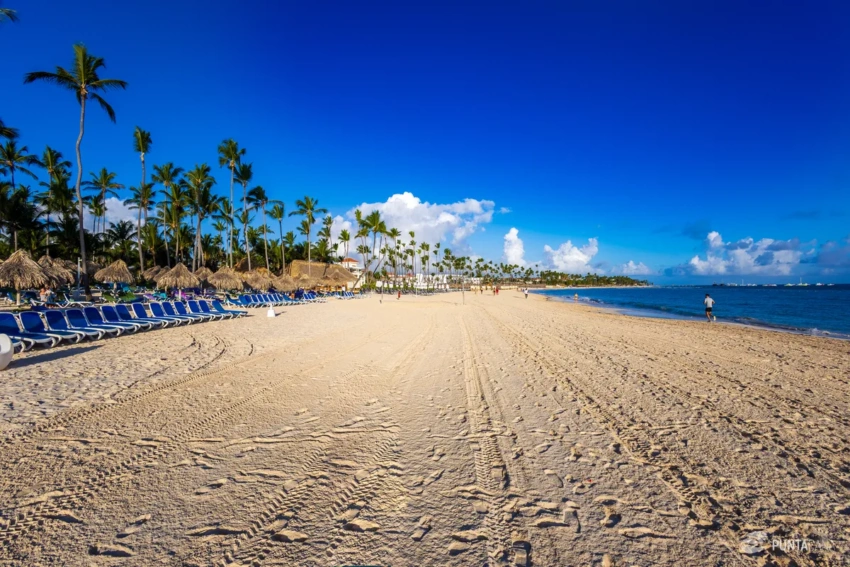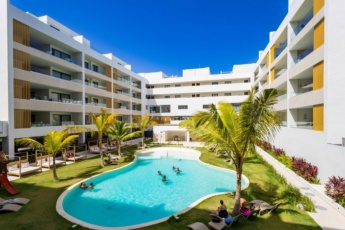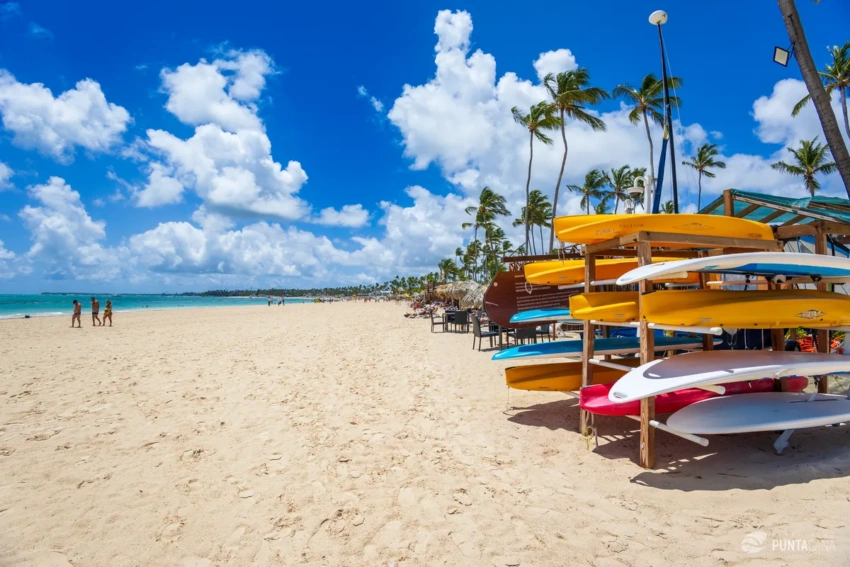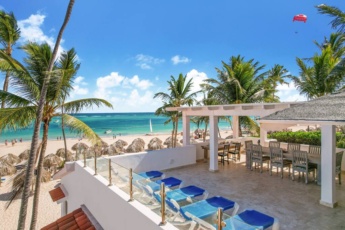What You Need to Know About Transportation When Renting in Punta Cana
Understanding Transportation Options in Punta Cana

What You Need to Know About Transportation When Renting in Punta Cana
Navigating transportation options in Punta Cana is essential for renters seeking to explore this tropical paradise with ease. Whether you’re here for a short vacation or an extended stay, understanding the available transport modes can enhance your experience significantly.
1. Public Transportation
The public transportation system in Punta Cana is a viable option for those looking to travel economically. The local bus service, known as “guaguas,” is a popular choice among both locals and tourists. These buses operate along fixed routes and connect various parts of Punta Cana with neighboring areas.
Travelers will find that guaguas are an affordable and frequent means of transport, yet they can be quite crowded, especially during peak hours. The downside is that they may not adhere to a strict schedule, which can lead to longer waiting times.
For tourists, understanding the routes and stops can be a bit challenging due to a lack of detailed maps or clear signage. It is advisable to ask locals for assistance or use a navigation app that includes public transportation options. While the language barrier might be intimidating, most drivers and passengers are friendly and willing to help.
2. Taxis and Ride-Sharing Services
Taxis are widely available in Punta Cana, providing a convenient and comfortable mode of transport. They can be flagged down on the street or booked in advance through hotels or taxi companies. When using taxis, it’s recommended to agree on the fare beforehand, as not all vehicles are equipped with meters.
Ride-sharing services like Uber have also made their mark in Punta Cana, offering a modern alternative to traditional taxis. These services are known for their transparency in pricing and the ability to easily book rides via mobile apps. However, availability can vary depending on the area and time of day.
Comparison of Taxis and Ride-Sharing Services
| Service Type | Availability | Pricing | Reliability | Convenience |
|---|---|---|---|---|
| Taxis | High | Variable | Moderate | Good |
| Uber | Medium | Transparent | High | Excellent |
3. Car Rentals
Renting a car in Punta Cana offers the ultimate freedom to explore the region at your own pace. Car rental agencies are abundant, with options ranging from international chains to local providers. Before renting, there are important factors to consider:
- Local driving laws and conditions can differ significantly from those in other countries. The legal driving age is 18, and it’s essential to have a valid driver’s license from your home country.
- Road conditions can vary; while main roads are well-maintained, rural areas might present challenges with potholes and unpaved paths.
- Understanding local traffic rules is crucial, as well as being cautious of motorbike traffic, which is common.
The pros of renting a car include flexibility in travel plans and the ability to visit remote attractions. However, the costs associated with insurance, fuel, and potential parking fees should be considered. Additionally, navigating unfamiliar roads can be stressful for some drivers.
By understanding these transportation options, renters in Punta Cana can make informed decisions that best suit their needs and preferences. Whether you choose public transport, taxis, ride-sharing, or a rental car, each option provides unique advantages tailored to different travel styles.
Navigating Punta Cana’s Roads and Traffic
Punta Cana, known for its stunning beaches and vibrant culture, also presents unique challenges and considerations for travelers navigating its roads. Understanding the local road conditions, traffic patterns, and signage can make a significant difference in your travel experience.

Punta Cana
1. Road Conditions
The road infrastructure in Punta Cana has improved significantly over the years, but travelers should still be aware of varying conditions. Main highways such as the Autopista del Coral are well-maintained, providing a smooth drive between major points of interest. However, secondary roads can be inconsistent, with some featuring potholes or uneven surfaces.
It’s advisable to opt for vehicles with good suspension if venturing beyond the main tourist areas. Additionally, rural and unpaved roads might be challenging, especially during the rainy season when they can become muddy and slippery.
2. Traffic Patterns and Peak Hours
Traffic in Punta Cana is generally lighter compared to major cities, but understanding peak hours is crucial for avoiding delays. Rush hours typically occur between 7:00 AM to 9:00 AM and 4:00 PM to 6:00 PM, aligning with local work schedules.
On weekends and holidays, traffic around tourist hotspots and popular beaches can increase significantly. Planning your travel outside these hours can help you enjoy a more relaxed journey. Additionally, using navigation apps can provide real-time traffic updates and alternate route suggestions.
3. Signage and Navigation Tips
Road signs in Punta Cana are primarily in Spanish, which can be a challenge for English-speaking tourists. However, the symbols and formats are quite similar to those in the United States. It’s beneficial to familiarize yourself with common Spanish terms such as “Salida” (Exit) and “Ceda el paso” (Yield).
For navigation, GPS devices and smartphone apps like Google Maps are invaluable. Ensure your device is set to download maps offline, as mobile data coverage may be inconsistent in remote areas. When using GPS, pay attention to the voice prompts to avoid distractions and always have a map or guidebook as a backup.
Our Best Villa Rentals in Punta Cana
For a luxurious and comfortable stay, consider our exclusive villa rentals in Punta Cana. Offering privacy and top-notch amenities, these villas are perfect for those looking to enhance their travel experience. Explore our current offerings below for a memorable stay.

Villa Agapi (Caleton Estates 57) - The Most Beautiful Ocean View Villa in Cap Cana
from $2150 night Read more
Exclusive Ocean View 5-Star Cap Cana Villa for Rent - Chef, Butler, Maid & Golf Cart
from $3450 night Read more
Private Villa at Puntacana Resort & Club for Rent - Pool, Jacuzzi, BBQ, Maid, Cinema Room
from $1569 night Read more
Modern & Stylish 4-BR Family-Friendly Villa Rental in a Quiet and Gated Community in Bávaro, Punta Cana
from $199 night Read moreCost and Budgeting for Transportation
Navigating the transportation landscape in Punta Cana can be both exciting and daunting, especially when it comes to budgeting. Whether you’re planning to explore the vibrant local culture or simply need a reliable way to get around, understanding the costs involved is crucial for a seamless experience.

Punta Cana
1. Comparing Costs Across Options
For travelers in Punta Cana, transportation costs can vary significantly depending on the mode of transport chosen. Let’s dive into the financial aspects of each option.
Transportation Cost Comparison in Punta Cana
| Transport Mode | Average Cost (One Way) | Pros | Cons |
|---|---|---|---|
| Public Bus | $1-2 | Affordable, extensive routes | Limited schedules, crowded |
| Taxi | $10-20 | Convenient, direct | Expensive, variable rates |
| Ride-Sharing | $8-15 | Safe, trackable | App-dependent, surge pricing |
| Car Rental | $40-60/day | Flexibility, privacy | Insurance costs, driving challenges |
Public buses are by far the most economical option, ideal for budget-conscious travelers. Taxis and ride-sharing services, while more expensive, offer convenience, especially during late hours or in areas less served by public transport. Car rentals provide unmatched flexibility for those planning to explore off-the-beaten-path destinations but come with additional costs like insurance and fuel.
2. Hidden Fees and Charges
When budgeting for transportation in Punta Cana, it’s crucial to account for potential hidden fees that could impact your overall expenses.
- Taxi Surcharges: Some taxi services may have additional charges for late-night rides or extra luggage, which can quickly add up.
- Car Rental Extras: Car rentals often come with hidden fees, such as mandatory insurance, GPS rentals, or additional driver fees. It’s wise to read the fine print and clarify any additional costs upfront.
- Ride-Sharing Surge Pricing: During peak times or inclement weather, ride-sharing apps can implement surge pricing, significantly increasing fare costs.
By being aware of these potential costs, travelers can better plan and avoid unpleasant surprises during their stay.
3. Tips for Saving Money
While transportation costs can be daunting, there are several strategies to reduce these expenses effectively.
- Plan Ahead: Booking transportation services in advance can often lead to discounts or special rates, especially with car rentals.
- Use Local Apps: Local transportation apps often provide competitive pricing and exclusive deals compared to international ride-sharing services.
- Travel Off-Peak: Traveling during non-peak hours can help avoid surge pricing and traffic congestion, saving time and money.
- Opt for Public Transport: For those comfortable with local schedules, public buses remain the most cost-effective option for getting around Punta Cana.
By incorporating these tips into your travel plans, you can enjoy the beauty and culture of Punta Cana without breaking the bank on transportation.
Our Apartments for Rent in Punta Cana
Whether you decide to explore Punta Cana by public transport, taxi, or rental car, having a comfortable place to stay is essential. Our selection of apartments offers convenient access to various transportation options, ensuring a smooth and enjoyable travel experience.

Brand New 2BR Stylish Apartment in the Heart of Bavaro, Punta Cana - Gardenia Gated Community
from $128 night Read more
Brand New Apartment in Eden Tropical, Punta Cana, Bávaro - Prime Location, Rooftop Lounge with BBQ, Huge Pool
from $98 night Read more
New Tropical-Style Studio for Rent in Downtown Punta Cana - Pool-View, Gym, Parking, Short Drive to the Beach
from $99 night Read more
Modern Studio for Rent in Downtown Punta Cana, Las Mercedes - With Pool & Private Balcony - Self Check-in
from $90 night Read moreSafety and Security Considerations
Ensuring your safety and security is paramount when navigating the transportation options in Punta Cana. From taxis to driving yourself, understanding the local landscape and best practices can enhance your travel experience.
1. Staying Safe in Taxis and Ride-Sharing
When utilizing taxis and ride-sharing services in Punta Cana, there are several key precautions to ensure your safety. Firstly, always opt for reputable services. While taxis are widely available, it’s crucial to use those affiliated with known companies or those recommended by your hotel. For ride-sharing apps like Uber, ensure your app is updated, and verify the driver’s details before getting in the car.
Another important tip is to avoid sharing your personal information with drivers. Keep conversations general and limit any details about your accommodation or travel plans. Additionally, try to travel during daylight hours when possible, especially if you’re unfamiliar with the area.
Safety Tips in Taxis and Ride-Sharing Services
| Tip | Explanation |
|---|---|
| Verify Driver Details | Check the driver’s identity and vehicle against your app’s information. |
| Use Reputable Companies | Only use taxis and ride-sharing services from known and trusted providers. |
| Limit Personal Information | Keep discussions general and avoid sharing too much about your plans. |
| Travel During Daylight | Whenever possible, arrange rides during daylight hours for increased safety. |
2. Driving Safety Tips
Driving in Punta Cana can be an adventure, but it requires a keen awareness of local conditions. Familiarize yourself with local driving laws, such as speed limits and right-of-way rules, which may differ from those in the United States. Ensure you’re comfortable with driving on the right side of the road and be vigilant about unpredictable driving behaviors from others.
It’s also wise to keep a safe distance between vehicles and be cautious of pedestrians and motorcyclists, who may not always adhere to traffic signals. Always wear your seatbelt and ensure all passengers do the same, as this is not only a legal requirement but a critical safety measure.
3. Emergency Contacts and Procedures
In the event of a transportation-related emergency, having quick access to emergency contacts is vital. The emergency number in the Dominican Republic is 911, which can be dialed for police, fire, and medical emergencies. Additionally, keep the contact information for your accommodation handy, as they can often provide immediate assistance or guidance.
It’s also beneficial to know the location of the nearest hospital or medical facility. While Punta Cana is generally safe, being prepared can make a significant difference in an emergency. Always have a charged mobile phone and consider downloading offline maps or local emergency apps.
The safety and security measures you take can greatly influence the quality of your travel experience in Punta Cana. By staying informed and prepared, you can enjoy the beautiful surroundings with peace of mind.
Unique Transportation Experiences in Punta Cana
Exploring Punta Cana offers a myriad of distinctive transportation experiences that add excitement and flavor to your travel. Whether you are an eco-conscious traveler or someone seeking luxury, there’s something for everyone.

Punta Cana
1. Eco-Friendly Transportation Options
As the world becomes more environmentally conscious, Punta Cana has embraced sustainable transportation options that allow you to explore the area while minimizing your carbon footprint. Electric vehicles and solar-powered golf carts are increasingly popular among environmentally aware visitors. These options are not only better for the planet, but they also provide a quiet and smooth ride through the picturesque landscapes of Punta Cana.
- Electric Vehicles: These are available for rent and are perfect for those who want to explore Punta Cana with minimal environmental impact. Charging stations are conveniently located in popular tourist areas.
- Solar-Powered Golf Carts: Ideal for navigating resort areas, these carts offer a leisurely way to move around while enjoying the island’s natural beauty.
2. Private and Luxury Transport Services
For those who prefer a touch of elegance and exclusivity, Punta Cana offers a range of private and luxury transport services. These services are perfect for special occasions or simply to enjoy a more comfortable travel experience.
- Private Chauffeur Services: Enjoy the luxury of having a driver at your disposal, allowing you to travel in style and comfort. These services often include high-end vehicles and personalized itineraries.
- Luxury Car Rentals: Choose from a selection of premium vehicles, including brands like Mercedes-Benz and BMW, to enhance your stay with opulence and sophistication.
Experience the best of Punta Cana with these unique transportation options that cater to both sustainability and luxury. Whether you’re exploring eco-friendly routes or indulging in high-end services, Punta Cana offers a diverse range of travel experiences.
Our Best Villa Rentals in Punta Cana
While you explore the unique transportation options, consider booking a luxurious villa to complement your stay. Our curated selection of villas offers unmatched comfort and style, perfect for making your Punta Cana experience truly unforgettable. Browse our top recommendations below and find your ideal retreat.

Huge Luxury Cap Cana (Las Palmas) Golf Villa for Rent - Chef, Butler, Maid, 2 Golf Carts, Jacuzzi, Semi-Olympic Pool
from $3744 night Read more
Brand-New Oceanfront Luxury Cap Cana 10BR Villa - Private Beach, Full Staff, Home Theater
from $8237 night Read more
New Bávaro Beach Beachfront Condo for Rent - Stunning Ocean View, Housekeeper & Rooftop Terrace
from $811 night Read more
Luxurious 5-bdr Villa at Casa de Campo - With Pool, Jacuzzi, Games, Hibachi Grill, Staff
from $1685 night Read more3. Bicycle and Scooter Rentals
For the adventurous at heart, renting a bicycle or scooter provides an exhilarating way to navigate Punta Cana. These options offer a sense of freedom and flexibility, allowing you to explore off-the-beaten-path locations at your own pace.
Comparison of Bicycle and Scooter Rentals
| Option | Average Cost (per day) | Pros | Cons |
|---|---|---|---|
| Bicycle | $10 – $20 | Eco-friendly, good for exercise, easy to park | Limited range, slower |
| Scooter | $25 – $40 | Faster, covers more distance, easy to maneuver | Fuel costs, safety gear needed |
Renting a bicycle or scooter is perfect for those who wish to combine sightseeing with physical activity. Many rental outlets provide maps and suggested routes to help you discover hidden gems and scenic spots that are inaccessible by car. Always ensure safety by wearing helmets and adhering to local traffic rules.
Frequently Asked Questions
What are the different transportation options available in Punta Cana?
In Punta Cana, you have several transportation options including taxis, rental cars, public buses (guaguas), and private shuttles. Each option varies in cost and convenience, so consider your travel needs and budget when choosing.
Is it necessary to rent a car in Punta Cana?
Renting a car in Punta Cana is not necessary but can be convenient if you plan to explore beyond the resort areas. Public transportation and taxis are readily available for shorter distances and excursions.
How much do taxis cost in Punta Cana?
Taxi rates in Punta Cana vary depending on the distance. A typical fare from the airport to the hotel zone can range from $30 to $50. It’s advisable to confirm the price with the driver before starting your trip.
Are there any driving regulations I should be aware of when renting a car in Punta Cana?
Yes, driving in Punta Cana requires a valid driver’s license from your home country. Traffic drives on the right side of the road, and seatbelts are mandatory. Be cautious of local driving habits and road conditions.
What are the benefits of using public transportation in Punta Cana?
Public transportation, such as the local buses or guaguas, is an economical way to travel around Punta Cana. It’s a great option if you’re comfortable with a more local travel experience and do not mind limited schedules.
Can I use ride-hailing apps in Punta Cana?
Ride-hailing apps like Uber are available in Punta Cana, offering a convenient and often cheaper alternative to taxis. However, availability can vary, and it’s wise to check the app for current service areas.
What should I do if I encounter any issues with transportation in Punta Cana?
If you encounter issues, it’s best to contact the transportation provider directly. For serious concerns, reaching out to local authorities or your rental agency can be helpful. Always keep receipts and document any incidents.
Are there any safety tips for travelers using transportation in Punta Cana?
Always ensure your transportation is from a reputable source. Verify the driver’s identity, agree on fares beforehand, and keep an eye on your belongings. For car rentals, ensure you have adequate insurance coverage.
Is transportation accessible for people with disabilities in Punta Cana?
While some hotels and resorts offer accessible transport options, public transportation may not be fully equipped for those with disabilities. It’s advisable to arrange for private, accessible transportation in advance.
